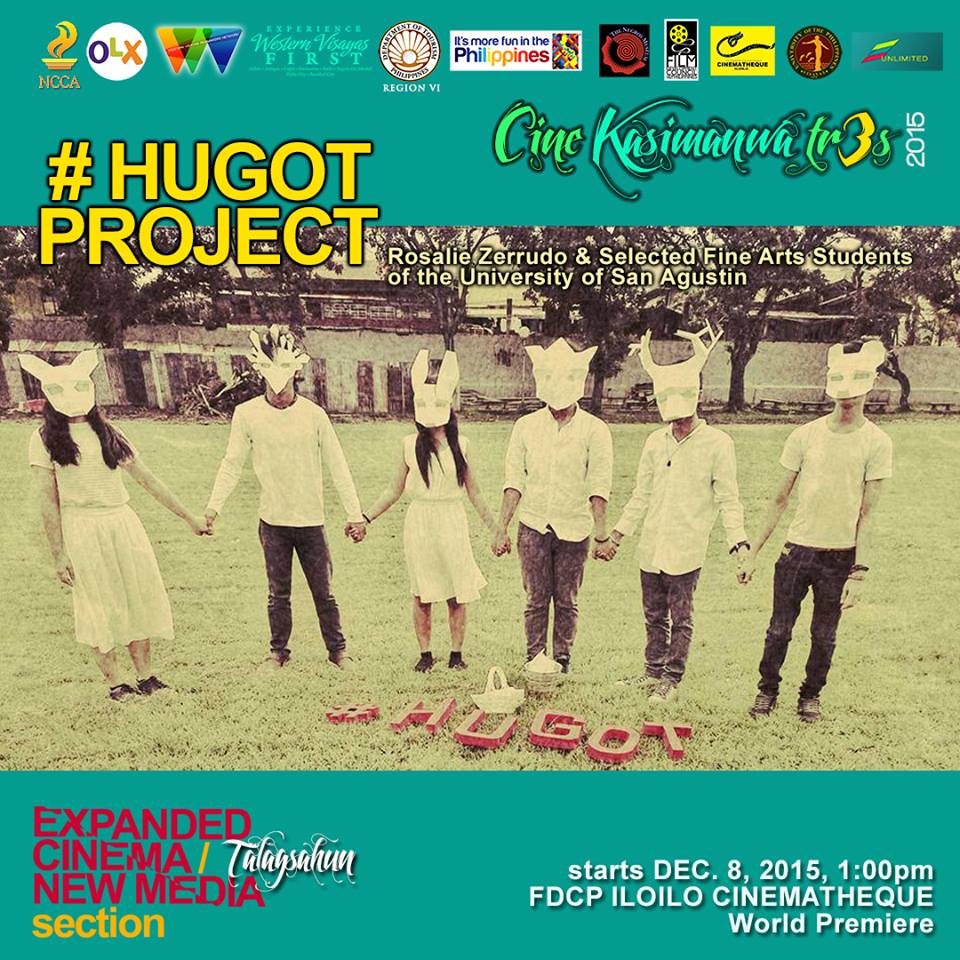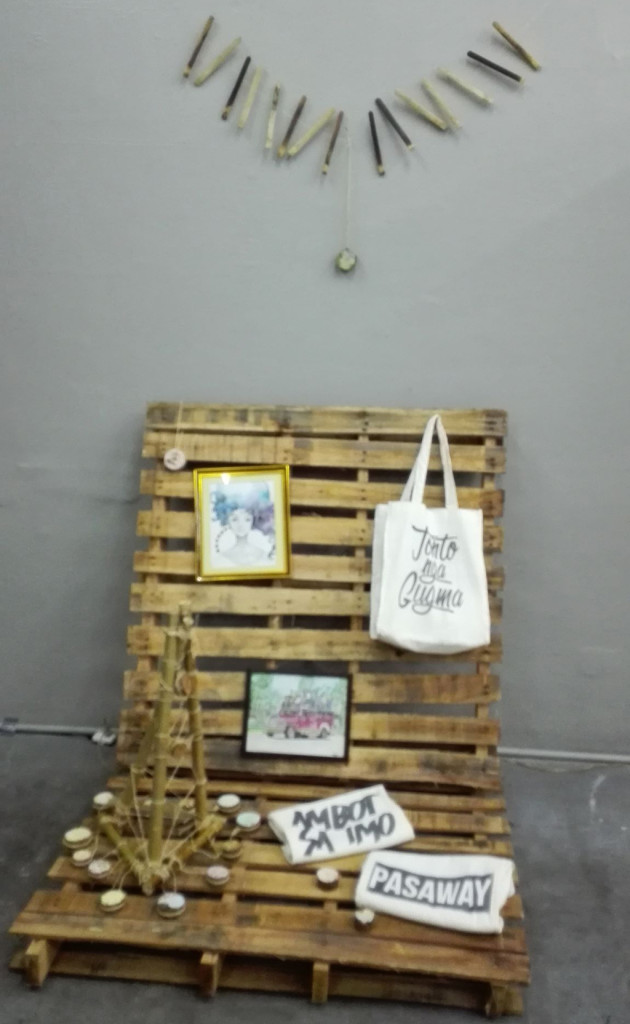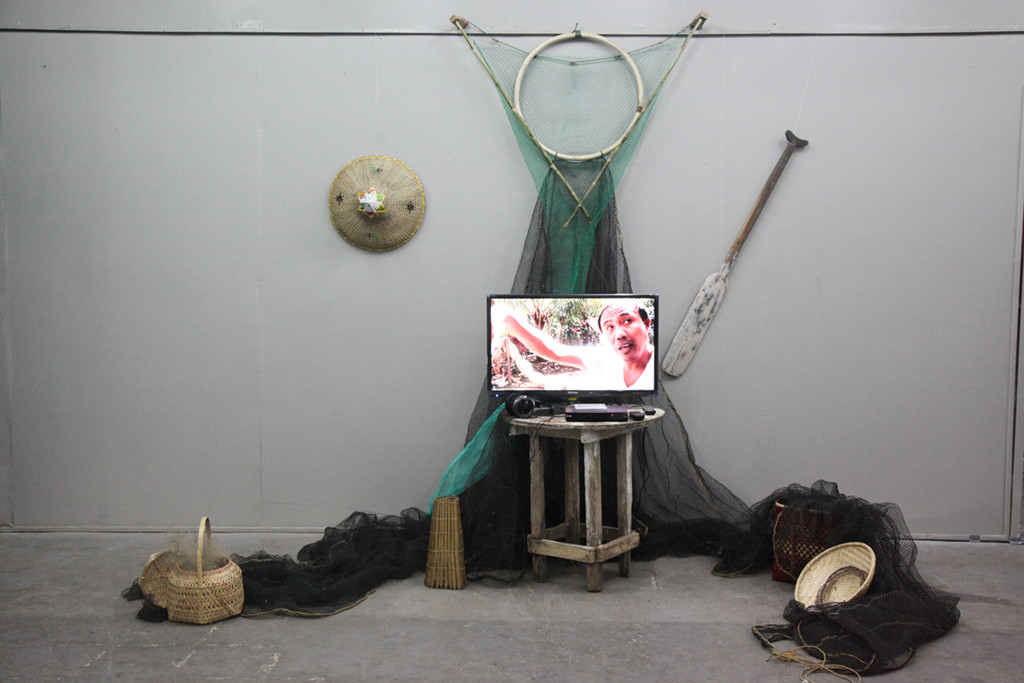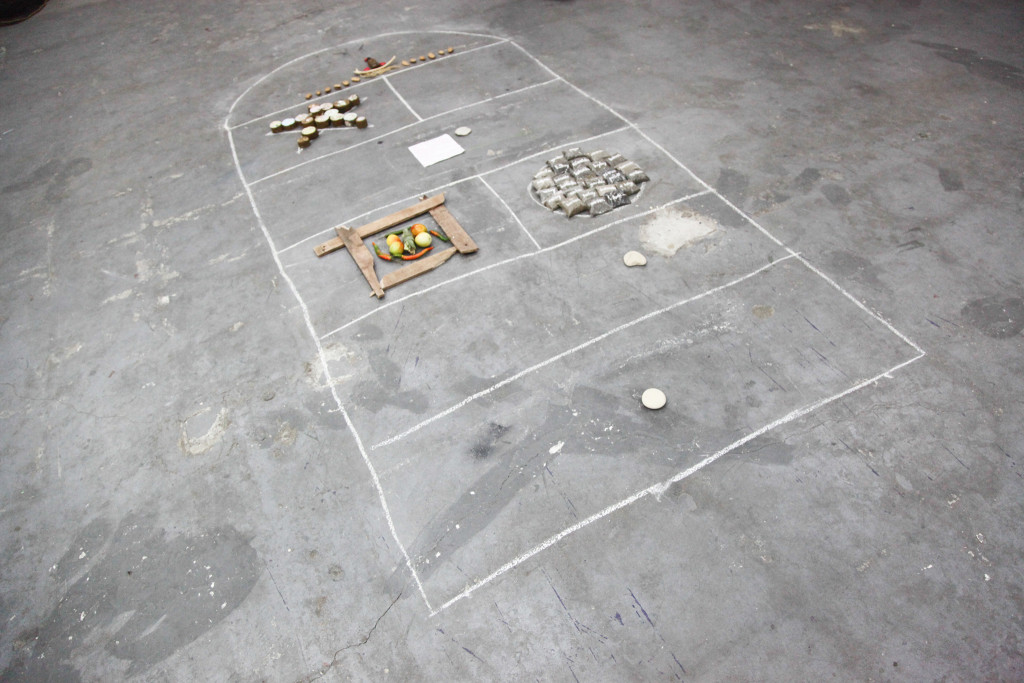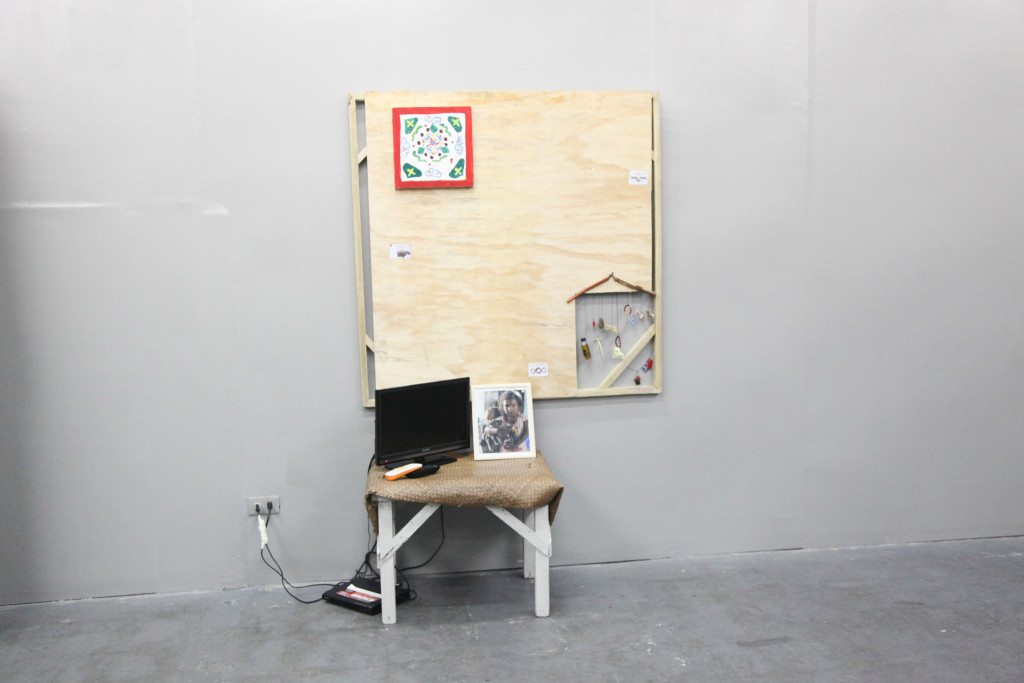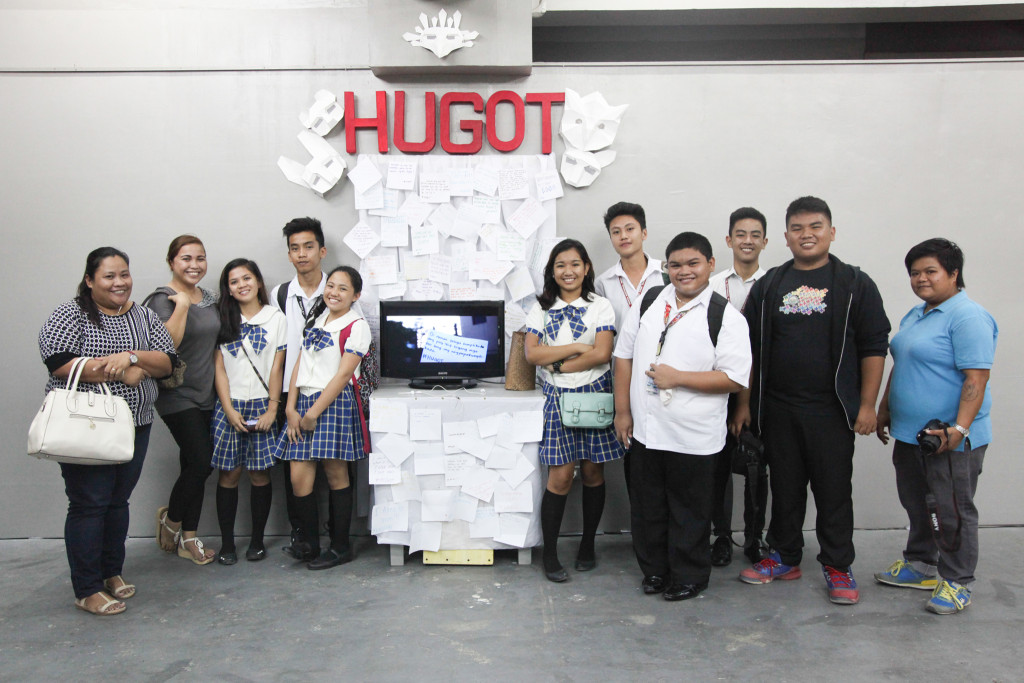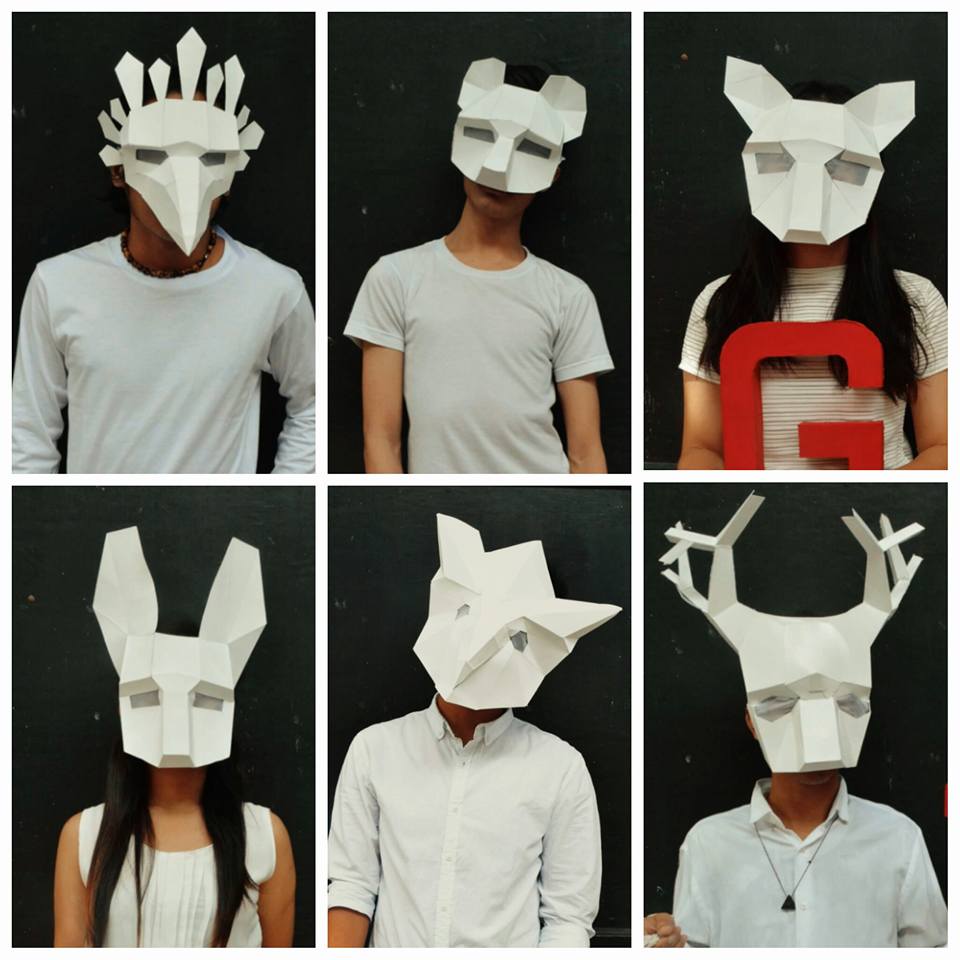CineKasimanwa: The Western Visayas Film Festival was one of the biggest highlight of the year 2015. This brainchild of Festival Director Elvert C. Bañares, created multi-platforms to give as many access to the public to more than hundreds of short films with an overall theme, “Lokal is International.” Iloilo bring together film makers from the different part of the region with visiting artists from Manila, New York and Taiwan.
One of the festival section is the expanded cinema video installation commissioned to the Fine Arts students of the University of San Agustin with the curatorial concept of Rosalie Zerrudo. The video installation employed five video works in our art seminar class as an output of the community engaged art projects. The Hugot project is part of the collaborative class project initiated by Bulahan which expanded into a community platform for intimate dialogue on various social issues as output of the art-based research project of Fine Arts students.
Hugot can be a derivative of several Hiligaynon nuances such as ugot, kagat, sugot, siagit, pitik, litik, katok, akig, buya, etc…
The world share a common excruciating outcry, the inconsolable violence against humanity at this time in history. There is no amount of sympathy to utter, enough to pacify such terror happening in many parts of the world. In our own little comfort zones, people continue the everyday mundane conversations that shape our relationships. In the limited space of a school campus, a few young brave souls masked as archetypal animals, gathered the angst of students as they end a semester and start a new. The personal becomes universal as pain and many other emotions compounded or cemented in the fragile body becomes words, words become weapons of anger, frustrations, depressions, insecurities, infatuations, inspirations, separations, or simple angst about classrooms junkies, suffocating course works, demanding parents, insatiable peer pressures. This project serves as the container of the unlimited discomforts and angts that resurrects the dead guts to life, a fire starter that breathes a constructive expression to the angsts of the everyday mundane life. The project Hugot commences into a video platform which reveals the different textures of angst from the streets, university campus, markets, highways, inside the jeepneys, cemeteries, river or inside a house. The video narrative makes the solid, liquid or vice versa through an open ended discourse which can be considered disturbing angst but valid and relevant commentaries of life. The “hugot” becomes a viral event in the context of “coming out” and being able to “tell the truth” about oneself.
Project # Hugot is a juxtaposition of an art seminar class involving young Fine Arts students of the University of San Agustin. The project statement evolved from a class exercise into a multi-platform engagement mounted for a cinekasimanwa exhibition that started as a dream ‘Hugot’; “We are visionaries. We are young and have all the good energy. We have ideas ready for the world. We are the Fine Arts Major students of the University of San Agustin in Art Class Seminar. We are interested in community-engaged art practice. We are challenged with the working theme around transforming places and designing communities. We are interested to collaborate with public spaces in Iloilo urban landscape encompassing natural environment, abandoned spaces, open landscapes, empty walls for CONCEPTUAL ART projects. We have ideas. We have concepts. We need spaces and resources. Let us work together to make Iloilo an ART DESTINATION.”
Dignadice created a space for the Ilonggo artist’s statement printed on Tees, mugs and painted on paper and canvass. Dignadice in her conceptual art and would like to use art as a process “to create dialogue and involve the local community in inner transformation and inner rebuilding of hearts to bring out the “BEAUTIFUL” in our place and people.”
Zerrudo and Florentino traced the Molo river heritage village which featured a day in the life of a local fisherman in the heart of the city parallel to the mega development which directly concerns the river and survival of the local people who mainly depended on fishing.
Piko as the centerpiece reflects Zerrudo’s curatorial landscape as the urban environment in the game of land, territories, narratives, heritage, living spaces, consumerism, over development navigating along each side of the river as the repository of local history and urbanization, the irreversible change.
Brasileño navigated the public market as he investigated the ‘superwoman’ of super in their struggle to sustain a living alongside the monoculture of ‘mall’ development which threatens the eradication of all local public heritage spaces. The question of and the threat of overdevelopment is answered by the women in a video interview and how they struggle in this complex landscape of survival. Despite the pressure of urbanization, the women in super maintain such candid humor in their gentle resistance.
Sarmon listened to the homeless children of the marginalized indigenous group, Ati in diaspora visible through their voices, dreams and aspirations as they struggle to survive and reclaim a territory they once owned. The display of the indigenous medicine mounted on a used plyboard reconstruct the ill treatment and inadequacy and suffering overlooked in the guise of urbanization . The continuous commercial expansion and gentrification that fail to consider the human spaces, reflects a city with no character which lost its soul. The Ati children have a story and a heritage to keep, though wandering in diaspora, they are their plight is a painful reminder of the roots of our identity.
Bulahan and other performers did a survey of the emotional landscape of about a hundred of the student population inside the campus of Universit of San Agustin. Bulahan shared the process and his thoughts about Hugot “Aside from being a trend from the social media, the word “hugot” somehow became an icon for people, to throw away like a stone when they don’t feel like keeping it anymore.”
The students masqueraded around the school with geometric masks, dressed in all white which became a signature cult-like images in the past months. The Hugot performers approached the students randomly around the campus and made them write their personal “hugot on a piece of paper.
The magic happened, Bulahan noticed a different glow after the interaction with students, “we looked back to see their faces so different from what they used to have moments earlier when we were just approaching them. And from that moment, we realized that somehow, the magic in our performance worked.” The performance was captivating, students generously poured out some personal issues tantamount to posting in social media, this exercise made such personal touch matter.
Florentino as one of the collaborators realized several aspects. “We actually needed a good plan(mapping) and studies as to where we should really do the project and consider questions like “Where to start?”, “Where to end?”, “Which place should we choose?” and “Why?”. In simpler terms, we could have been specific on this aspect of the performance because space is one of the most important elements of design.”
Nonato’s reflection on dealing with teenage emotional distress says “Hugot project profoundly awakened our personal senses. As an individual, I can clearly see that every “hugot” is bound to treat us with a challenge that reflected from how we deal with things inside and outside the human physicality.” The students explore the world bigger than themselves through this creative inquiry exercise.
Macabanti values his experience, “In the performance alone, we have developed the sense of unity to immerse ourselves into the world of common people upon learning their behaviour towards life’s challenges. By uniting to engage in a community project, we have learned from our audience the value of their perseverance on their individual hugot. Their dedication to be responsible to themselves by contemplating on their personal hugot inspired me to look differently into such things that dwell inside us.”
Bulahan summarizes the project benefits of Project #HUGOT as “The project in its simplest definition benefits people by partially letting go of things that bother, distract, or disturb them. It does not only imply the contemporary trends of the youth today but it also teaches people to let go of their ideas or feelings which may be mostly unpleasant or can be considered a burden to one’s focus in life or on a certain matter. Project #HUGOT can give a chance to someone to let go of even just a little weight of pessimism which can affect them for a day, a week, a month, or even a year. It promotes the capacity of human beings to defy obstacles in a very simple way that requires no other efforts but to simply write down what they feel or experience at a certain moment on a piece of paper and then letting it fly out of their minds. This project does not only release the negativity of people on a certain community. It also considers sharing other people’s happiness if that’s what bothers them. Though sharing happiness can sometimes be in great scarcity, we can consider this project as an abundance of it because it promotes optimism, positivity and good vibes besides entertaining them.”
The Hugot project made the students ‘see’ the ‘other’ in the context of Kapwa psychology, it is looking at the self in the other person. The hugot of another person is reflected in the inner islands connected in the collective consciousness. The conversations made through different mediums and exercises surfaced the personal to a public space and individual to collective space. The video installation was a multi-layered platform of the urban multi-textured commentaries breathing in one space.
Project #HUGOT
Section: Cinekasimanwa Expanded Cinema / New Media
Venue: FDCP Iloilo Cinematehque Gallery
Date: Dec. 8, 2015 to Dec. 13, 2015
Filmmaker/Artists:
University of San Agustin (Fine Arts)
Rosalie Zerrudo (Curator)
Ronnyl Bulahan (Project Leader)
Jonn Laserna
Cheska Sarmon
Anne Catherine Malazarte
Claudine Dignadice
Kristoffer Brasileño
Kinno Florentino
Norma Nonato
Riche Kevin Apruebo
Maria Josefina Pama
Jan Lary Vido
Jester John Macabanti
Carren Evangelista
Photos by Christian Evren Lozañes and Cinekasimanwa official page.

